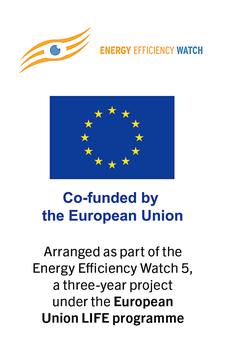Search eceee proceedings
Identification of optimal measurement points for energy monitoring of industrial processes: the case of milk power production
Panel: 3. Energy management
Authors:
Riccardo Bergamini, DTU - Department of Mechanical Engineering, Section Thermal Energy, Denmark
Tuong-Van Nguyen, École polytechnique fédérale de Lausanne, Switzerland
Lorenzo Bellemo, GEA Process Engineering A/S, Denmark
Brian Elmegaard, Technical University of Denmark, Denmark
Abstract
Key to deep decarbonisation of industry is to increase the energy efficiency of industrial processes. Meaningful energy analyses are paramount in this context, ranging from the more generic energy audits [1] to the more detailed Process Integration (PI) studies [2]. A key role of such analyses is played by the quality and availability of energy-related process data [3]. High-quality data is required for getting reliable results, while availability is essential for decreasing the time and costs of the analysis. For this reason, the European Energy Efficiency Directive [1] urges industrial manufacturers in installing energy monitoring systems as a first step towards the energy efficiency goals. However, a lack of systematic methods for identifying the required measurement points, joint to scarce information on the related benefits, results in reluctance from companies in investing in such systems.
A recently published method, named Required Data Reduction Analysis (RDRA) [4], could fill this gap. It was originally developed for reducing the time consumption in PI retrofit studies, by identifying a limited number of parameters whose detailed measurement is paramount to meaningfully characterise the plant from an energy perspective. It combines Pinch Analysis with uncertainty analysis (Monte Carlo simulations), global sensitivity analysis (standardised regression coefficients) and optimisation procedures to solve the “Factor Fixing” and “Variance Cutting” problems [5]. This feature can be further exploited for the identification of optimal measurement points for energy monitoring purposes while also indicating a clear use for the monitored data, i.e. to perform advanced energy analysis employing PI techniques.
The capabilities of the RDRA method for identifying necessary measurement points in industrial processes are presented. It was applied to four milk powder production plants, identifying the process parameters to be monitored in order to estimate the plant energy consumption and potential for energy savings with given maximum confidence, ensuring the quality of the results. Comparing the results obtained from the four case studies it was possible to infer some general traits of milk powder production processes. In particular, 15 out of 60 to 66 parameters were identified as generally important in all the facilities, their position in the plant was highlighted and the minimum accuracy level required for their measurement was estimated. Such information could subsequently be used for designing an energy monitoring system and giving proof of its benefits to the involved company, by quantifying them in terms of uncertainty reduction in the outcome of the energy analysis.
References
[1] The European Commission. Directive 2012/27/EU of the European parliament and the council on energy efficiency. Off. J. Eur. Union. 2012;315:1–56.
[2] Kemp IC. Pinch analysis and process integration: A user guide on process integration for the efficient use of energy. 2nd ed. Pinch Anal. Process Integr. Burlington, Massachusetts (US): Butterworth-Heinemann; 2007.
[3] El-Halwagi MM. Sustainable Design Through Process Integration. Second. Sustain. Des. Through Process Integr. 2017.
[4] Bergamini R, Nguyen T-V, Elmegaard B. Simplification of Data Acquisition in Process Integration Retrofit Studies Based on Uncertainty and Sensitivity Analysis. Front. Energy Res. [Internet]. 2019;7:108. Available from: https://www.frontiersin.org/article/10.3389/fenrg.2019.00108/full
[5] Saltelli A, Ratto M, Andres T, Campolongo F, Cariboni J, Gatelli D, et al. Global Sensitivity Analysis --- The Primer [Internet]. Glob. Sensit. Anal. Prim. Chichester, UK: John Wiley & Sons Ltd; 2008. Available from: http://doi.wiley.com/10.1002/9780470725184.ch6%5C
Downloads
Download this presentation as pdf: 3-080-20_Bergamini_pre.pdf














